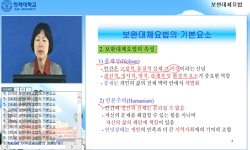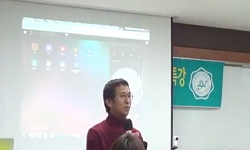본 논문은 통계청의 기업활동조사 2015년과 2017년 원자료를 이용해 4차 산업혁명 기술 활용 여부와 고용규모 간 관계를 성향점수매칭과 회귀분석을 통해 실증적으로 분석한다. 분석결과에 의...
http://chineseinput.net/에서 pinyin(병음)방식으로 중국어를 변환할 수 있습니다.
변환된 중국어를 복사하여 사용하시면 됩니다.
- 中文 을 입력하시려면 zhongwen을 입력하시고 space를누르시면됩니다.
- 北京 을 입력하시려면 beijing을 입력하시고 space를 누르시면 됩니다.

4차 산업혁명과 고용규모 간 관계에 대한 실증분석 = An Empirical Analysis on the Relationship between 4th Industrial Revolution and Employment Size
한글로보기https://www.riss.kr/link?id=A107983485
- 저자
- 발행기관
- 학술지명
- 권호사항
-
발행연도
2021
-
작성언어
-
-
주제어
4차 산업혁명 ; 고용 ; 대체 ; 보완 ; 4ᵗ ; ʰ ; Industrial Revolution ; Employment ; Replacement ; Complementation
-
KDC
325
-
등재정보
KCI등재후보
-
자료형태
학술저널
-
수록면
61-81(21쪽)
- DOI식별코드
- 제공처
-
0
상세조회 -
0
다운로드
부가정보
국문 초록 (Abstract)
본 논문은 통계청의 기업활동조사 2015년과 2017년 원자료를 이용해 4차 산업혁명 기술 활용 여부와 고용규모 간 관계를 성향점수매칭과 회귀분석을 통해 실증적으로 분석한다. 분석결과에 의하면, 4차 산업혁명으로 인해 고용이 증가하지만 이러한 고용증가는 비제조업에 해당하는 기업의 임시 및 일용직 고용에 한정된다. 그럼에도, 4차 산업혁명으로 인한 생산공정 자동화의 가속화는 제조업에서 고용의 감소를 야기하지는 않는 것으로 분석된다. 비제조업에서는 Katz and Margo(2014)의 이론적 주장을 뒷받침하는 결과가 나타나는 반면에 제조업에서는 Bessen(2016)의 주장과 부합하는 결과가 관측된다. 비록 4차 산업혁명으로 일자리의 총량은 크게 영향을 받지 않을지라도, 직무간 일자리의 변동은 상이할 수 있다. 다시 말해, 일자리를 잃는 계층-이를테면, 단순 반복적 직무의 일자리에 종사하는 계층-과 일자리가 늘어나는 계층-이를 테면, 창의적이고 전문지식을 필요로 하는 직무의 일자리에 종사하는 계층-이 존재할 것이며, 전자는 정부의 4차 산업혁명 관련 정책의 피해자에 해당하기 때문에 이들이 일자리를 잃지 않고 새로운 직무에 필요한 기술을 익힐 수 있도록 정부에 의한 기술훈련 및 교육서비스 제공이 요구된다.
다국어 초록 (Multilingual Abstract)
This paper empirically analyzes the relationship between the use of 4th Industrial Revolution technology and employment size through propensity score matching technique and regression analysis on the Survey of Business Activities 2015 and 2017 by Stat...
This paper empirically analyzes the relationship between the use of 4th Industrial Revolution technology and employment size through propensity score matching technique and regression analysis on the Survey of Business Activities 2015 and 2017 by Statistics Korea. According to results, although employment increases due to 4th Industrial Revolution, this increase in employment is limited to the temporary and daily employment in the non-manufacturing sector. However, the acceleration in production process automation by 4th Industrial Revolution appears not to cause employment in the manufacturing sector to decrease. The results in the non-manufacturing sector are supportive of Katz and Margo (2014)’s theoretic arguments while those in the manufacturing sector are observed to be in line with what Bessen (2016) predicts. Even though the total amount of jobs is not affected by 4th Industrial Revolution, the variation in jobs among tasks could differ. That is, there would be a social class who loses jobs (e.g., people who work in simple and repetitive jobs) and another social class who obtains the opportunity of more jobs (e.g., people who work for jobs with creative and professional tasks). Since the former belongs to a victim of the government’s policies related with 4th Industrial Revolution, it is required for the government to provide workers in jobs that would be replaced by automation with training and education service. By doing that, they can learn skills needed in the new tasks and maintain their jobs.
목차 (Table of Contents)
- Ⅰ. 서론 Ⅱ. 이론적 배경과 분석모형 Ⅲ. 자료 및 변수 Ⅳ. 실증분석 결과 Ⅴ. 결론
- Ⅰ. 서론 Ⅱ. 이론적 배경과 분석모형 Ⅲ. 자료 및 변수 Ⅳ. 실증분석 결과 Ⅴ. 결론
동일학술지(권/호) 다른 논문
-
이중나선구조 모형을 통해 본 기업의 진화과정 : 기아자동차 인도 공장 사례를 중심으로
- 동국대학교 경영연구원
- 유병욱(Byung Wook Yoo)
- 2021
- KCI등재후보
-
- 동국대학교 경영연구원
- 신범철(Beom Cheol Cin)
- 2021
- KCI등재후보
-
사회적 매체(Social Media) 사용빈도가 온∙오프라인 의사소통 증감에 미치는 영향 : 정보교환양의 매개효과에 관한 탐색적 연구
- 동국대학교 경영연구원
- 박기호(Park Kiho)
- 2021
- KCI등재후보




 스콜라
스콜라






